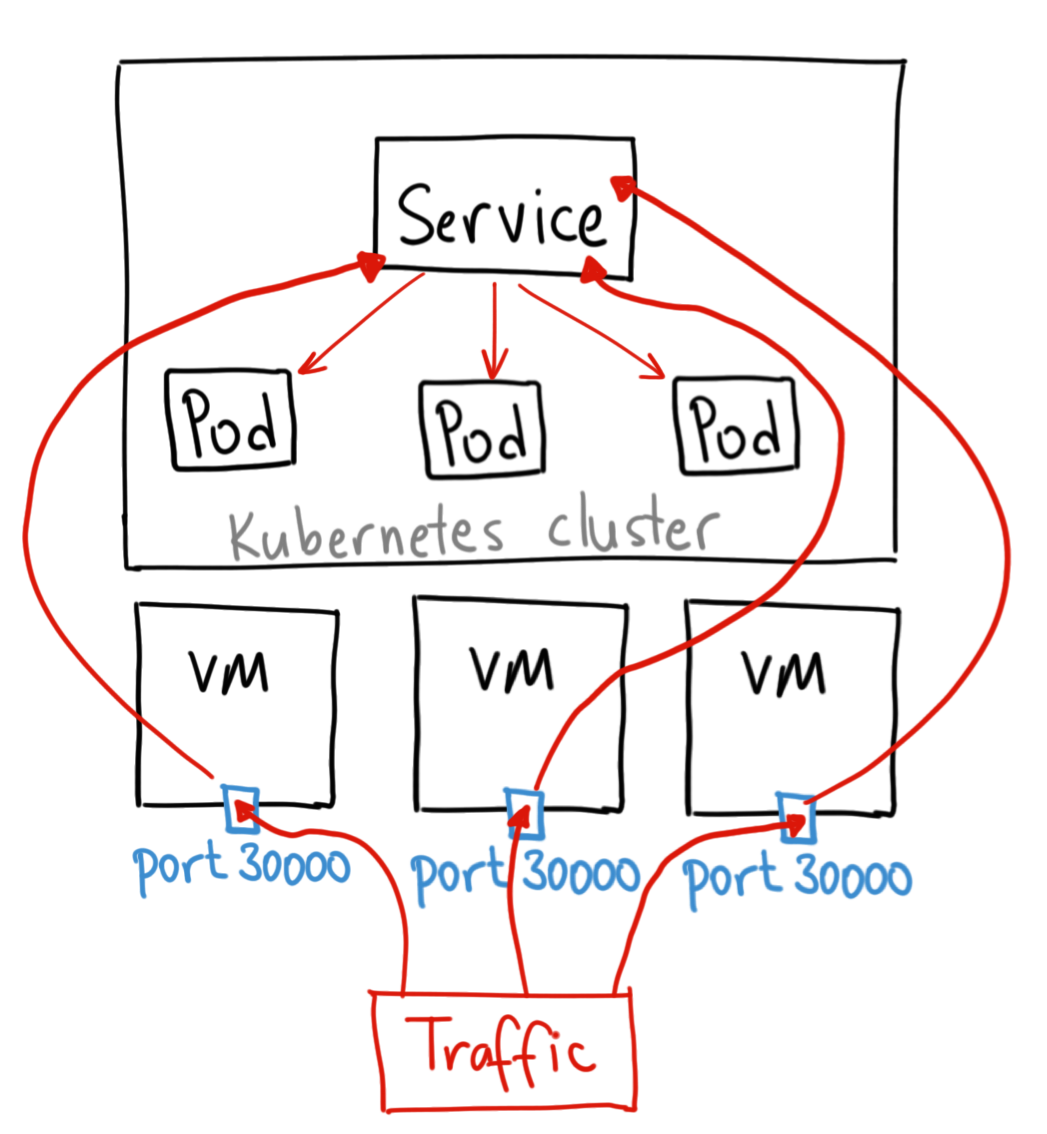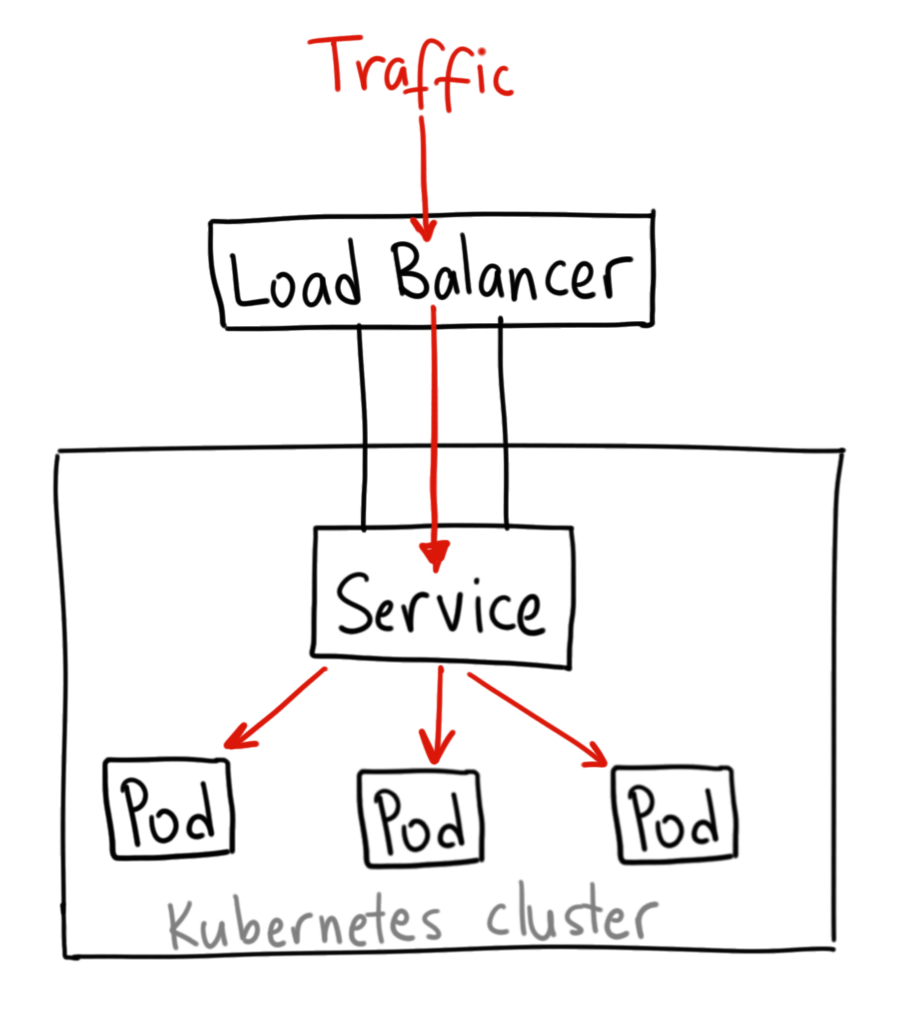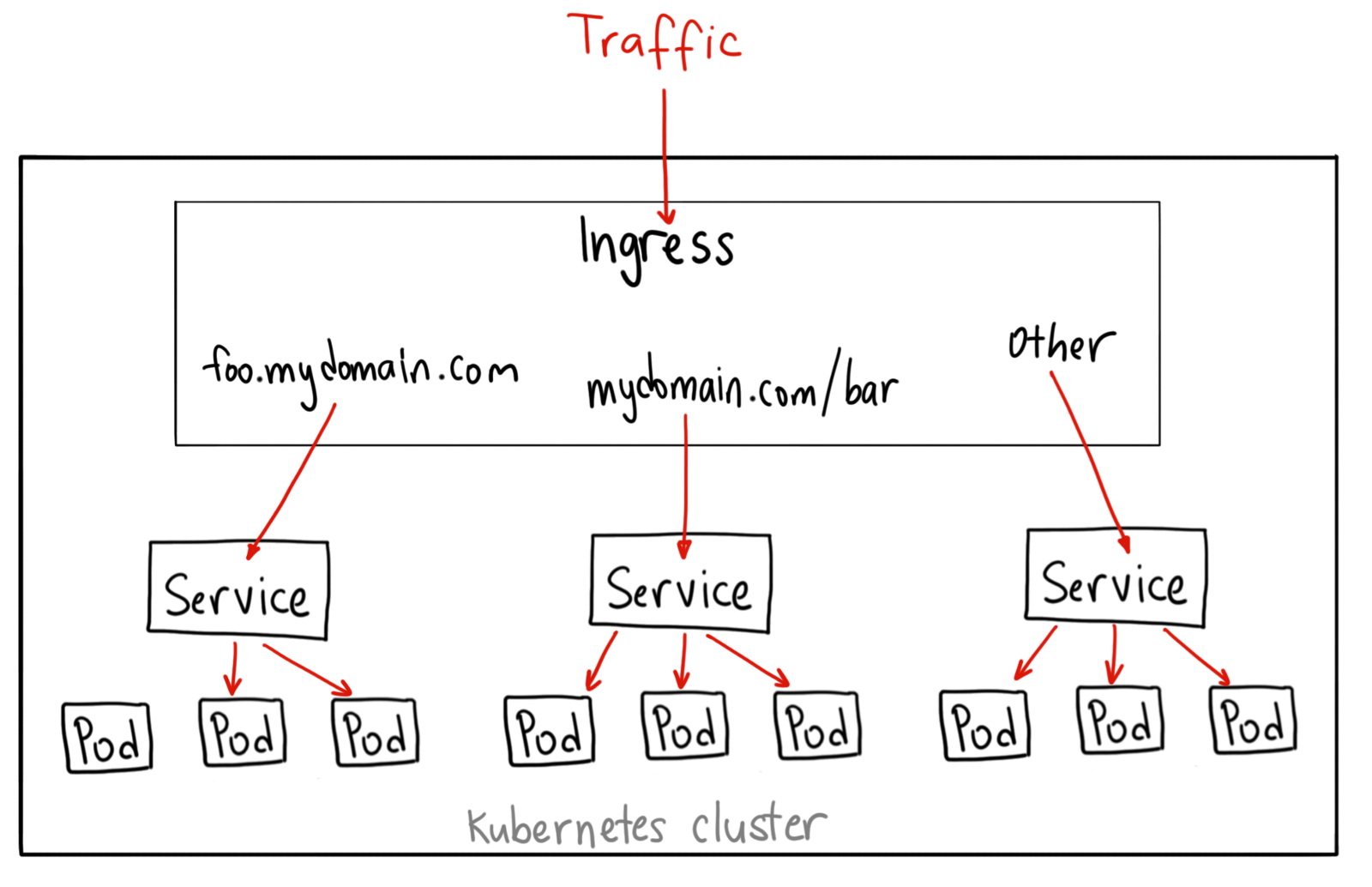...
deployment.apps/nginx-deployment created
Exposing Services
Services
A Kubernetes Service is an abstraction which defines a logical set of Pods and a policy by which to access them - sometimes called a micro-service.
Defining a Service
| Code Block |
|---|
kind: Service
apiVersion: v1
metadata:
name: my-service
spec:
selector:
app: MyApp
ports:
- protocol: TCP
port: 80
targetPort: 9376 |
If we want to define a service which connects to outside IP addresses (maybe for a database in production), we would not specify a selector for our service and we would define an endpoint.
| Code Block |
|---|
kind: Service
apiVersion: v1
metadata:
name: customer-db
spec:
ports:
- protocol: TCP
port: 154321
targetPort: 54321 |
Since no selector is specified, kubernetes will not create an Endpoint so we will have to.
| Code Block |
|---|
kind: Endpoints
apiVersion: v1
metadata:
name: customer-db
subsets:
- addresses:
- ip: 1.2.3.4
ports:
- port: 54321 |
Types of Services
ClusterIP
Exposes the service on a cluster-internal IP. Choosing this value makes the service only reachable from within the cluster. This is the default ServiceType.
NodePort
Exposes the service on each Node’s IP at a static port (the NodePort). A ClusterIP service, to which the NodePort service will route, is automatically created. You’ll be able to contact the NodePort service, from outside the cluster, by requesting <NodeIP>:<NodePort>
LoadBalancer
Exposes the service externally using a cloud provider’s load balancer. NodePort and ClusterIP services, to which the external load balancer will route, are automatically created.
Ingress
Ingress, added in Kubernetes v1.1, exposes HTTP and HTTPS routes from outside the cluster to services within the cluster. Traffic routing is controlled by rules defined on the ingress resource.
internet
|
[ Ingress ]
--|-----|--
[ Services ]An ingress can be configured to give services externally-reachable URLs, load balance traffic, terminate SSL, and offer name based virtual hosting. An ingress controller is responsible for fulfilling the ingress, usually with a loadbalancer, though it may also configure your edge router or additional frontends to help handle the traffic.
...
| Reference | URL |
|---|---|
| A friendly introduction to Kubernetes | https://medium.freecodecamp.org/a-friendly-introduction-to-kubernetes-670c50ce4542 |
| Kubernetes Concepts | https://kubernetes.io/docs/concepts/ |
| Load-Balancing in Kubernetes | https://rancher.com/load-balancing-in-kubernetes/ |
| Kubernetes NodePort vs LoadBalancer vs Ingress? When should I use what? | https://medium.com/google-cloud/kubernetes-nodeport-vs-loadbalancer-vs-ingress-when-should-i-use-what-922f010849e0 |
| What is Ingress? | https://kubernetes.io/docs/concepts/services-networking/ingress/#what-is-ingress |
...


